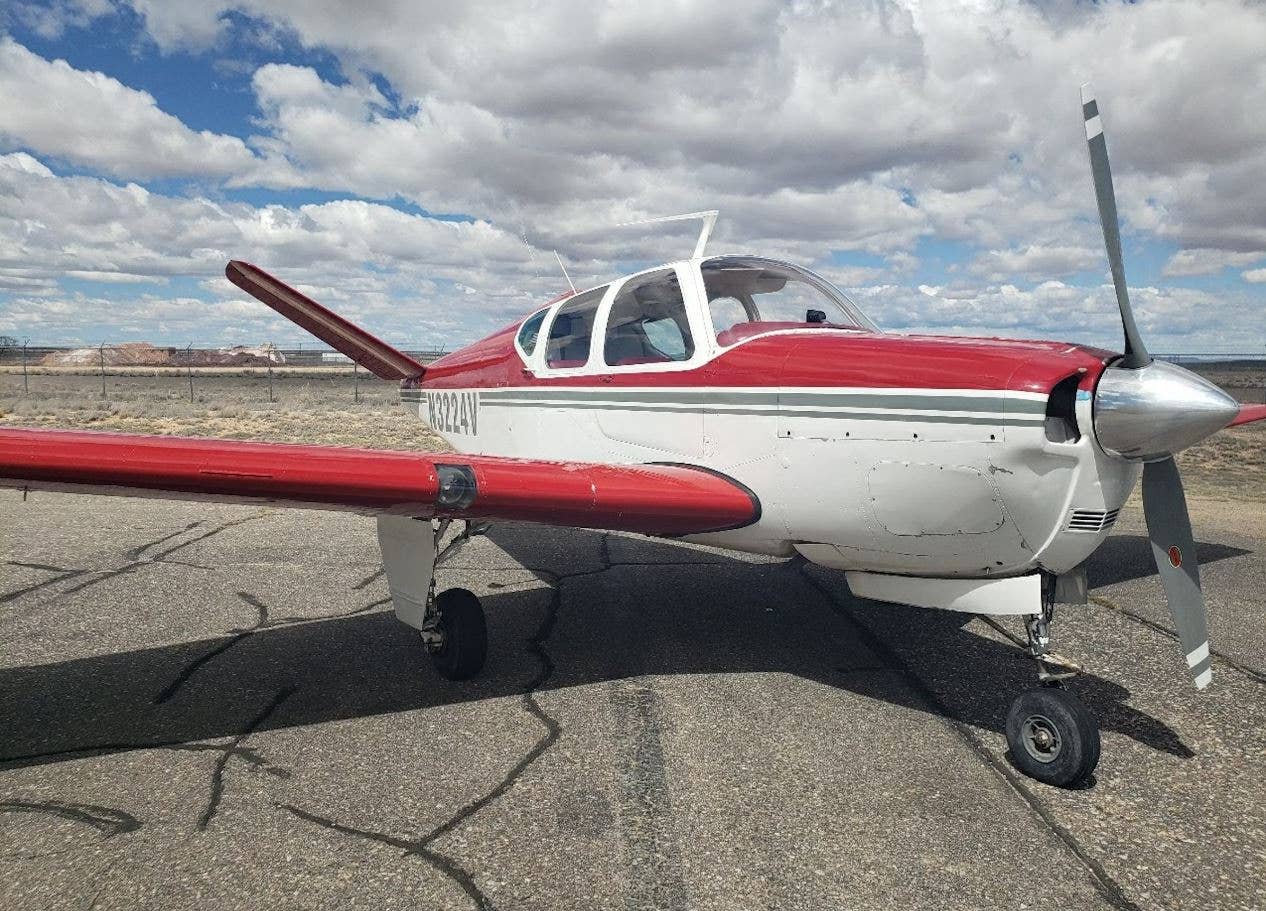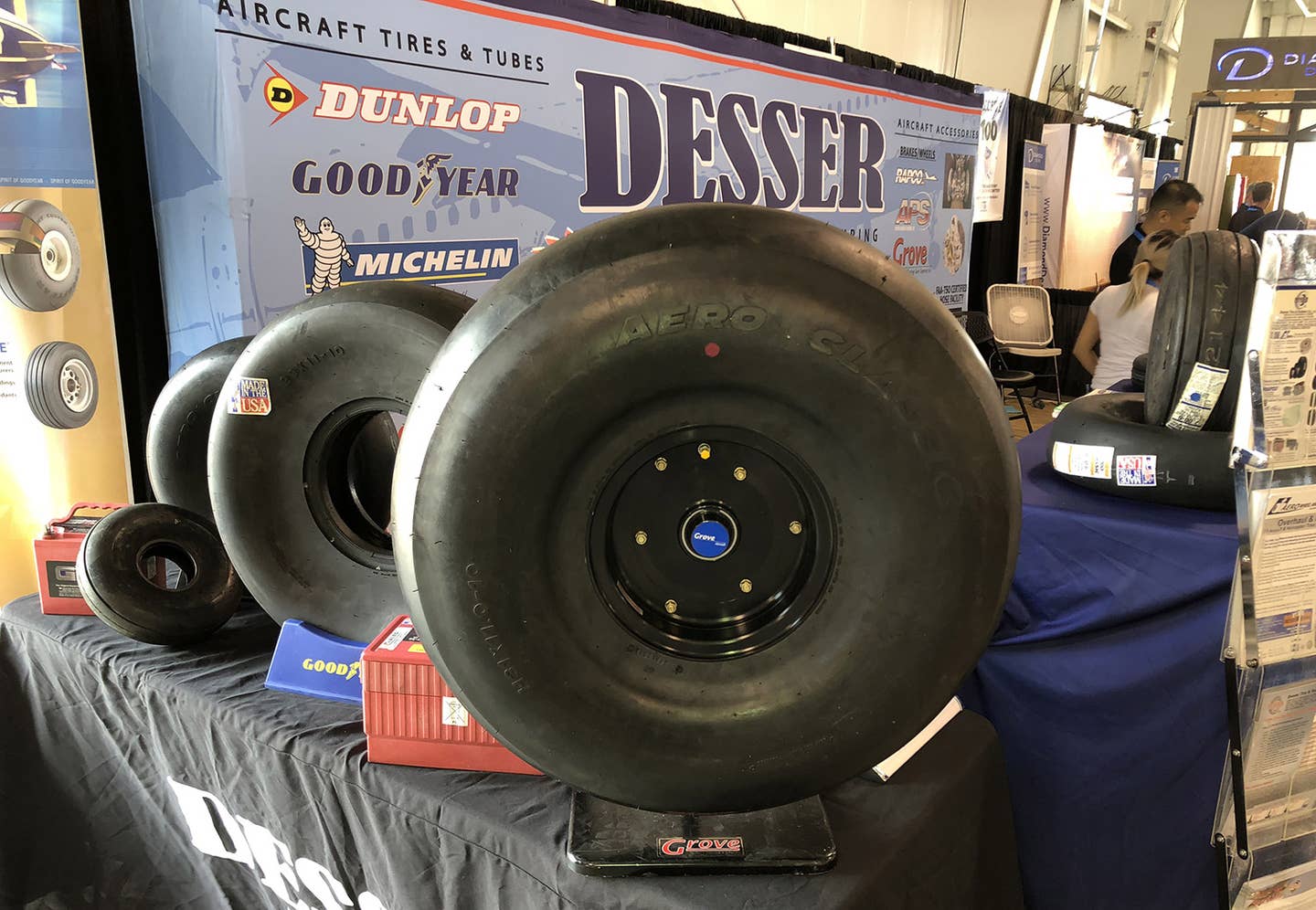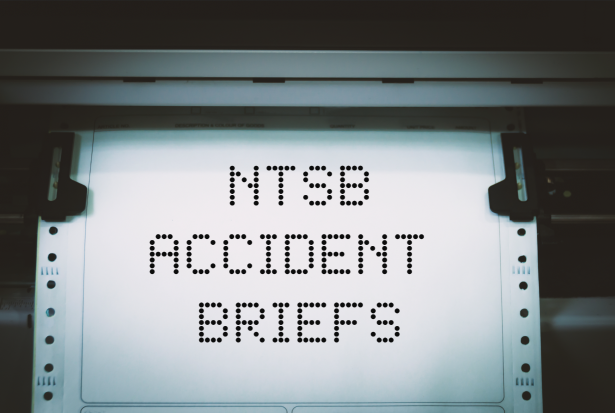Draco: The Coolest Airplane In The World?
Mike Patey built this heavily modded turboprop taildragger to show the world what STOL really means. How he created the ultimate fixed-wing helicopter.
What do you get when you put a turbine engine on one of the most versatile of all bush planes? A pretty epic race-winning STOL aircraft, and this year's winner of the 2018 High Sierra STOL Drag competition. Brainchild of self-taught engineer and successful entrepreneur Mike Patey, Draco is the ultimate backcountry airplane. With its bright red skin, tall legs and heavy cloud of dust around it, Draco commands attention everywhere it lands. If you don't happen to see it, you hear it; it's one of the few bush planes with a turbine engine and reverse thrust, and the whine of the turboprop comes unexpectedly to unsuspecting observers.
Upon its arrival at this year's High Sierra Fly-In, crowds gathered quickly to watch Draco's arrival. The bright red airplane against the white desert landscape made for a stunning panorama. As crowds gathered to watch the famous STOL Drag race, the high point of the High Sierra Fly-In each year, Draco did not disappoint. In fact, this year Mike Patey and Draco stole the trophy from Mike's own twin brother, Mark, who in 2017 won the STOL drag contest in his Carbon Cub EX.
Subscribe today to Plane & Pilot magazine for industry news, reviews and much more delivered straight to you!
It took Mike Patey a mere five months and one week to build the Wilga modification that he calls Draco. (When Patey says that he dropped out of engineering school because it was too slow for him, he wasn't kidding. It would seem that he typically moves more quickly than the world around him.) During those five short months, Patey joined a PZL 104 Wilga airframe with a PT6A-24 turbine engine to create Draco. Highly modified to suit Patey's particular flying lifestyle, Draco really is a beast of a bush plane.
Draco is not the first Wilga that Patey has owned. In 2006, Patey discovered his first Wilga at Oshkosh, when he stumbled across one and took an interest. It wasn't for sale, but he convinced the owner to let him buy it on the spot. It was Serial Number One of only 24 Wilga 2000 models ever built. Earlier models had a Russian-built 260-horsepower AI-14 radial engine and eventually a Continental O-420, but in an effort to complete in the U.S. market, the Wilga 2000 was eventually built with a Lycoming O-540. Patey flew his new Wilga for two years and then sold it, with plans to buy another one. Shortly after, however, production of the Wilga 2000 aircraft had halted. Patey says it took him 10 years to find another one.
Patey did finally end up with the last Wilga 2000 to be produced, but he wasn't happy with the underperforming stock O-540. Patey had already determined that the Wilga needed a more powerful engine when the 0-540 catastrophically failed one day, resulting in an off-airport landing in the desert. Stuck in the desert with a bad engine, Patey had all the motivation he needed to get started on his turbine Draco. He rebuilt the O-540 right there in the middle of the desert, flew the Wilga home, and began working on fitting Draco with a turbine engine. The PT6A would do. And he just happened to have one available.
Putting a turbine engine onto a Wilga wasn't going to be easy. Switching from a certified aircraft type certificate to an experimental type certificate wasn't a seamless process, and Patey says since he couldn't get a standard experimental amateur build certificate, he applied for an experimental exhibition certificate, which allows him to exhibit at airshows but comes with another set of limitations. He had to build his own in-depth service manual, for example, and have it approved by the FAA. Not an easy task when you consider all of the individual modifications the airplane underwent. And an experimental exhibition certificate means that Patey is limited to what type of flying he can do. The exhibition certificate allows for the obvious air show flights, and it allows for training and proficiency flight, but it doesn't necessarily allow him to fly Draco whenever he wants or without reason.
With a heavily modified airframe, this can hardly be called a Wilga anymore. Patey added five air filters, a new carbon fiber cowling and carbon fiber molds for cameras, including a night vision camera and back-up camera, which Patey says is helpful for backing into the hangar as well as formation flying and situational awareness on backcountry strips. Oxygen cannulas for all four seats allow for high-latitude flights, and additional fuel tanks in the gear legs not only provide additional fuel but also help lower the center of mass and allow for constant fuel flow even during unusual attitudes like forward slips -- a problem he would have had with the standard fuel system. Patey lengthened the chord of the wing by a foot, enlarged the flaps and ailerons by 6 inches, and added different leading-edge cuffs, all of which he says took about 20 kts off the stall speed.
A full IFR panel, a new three-axis autopilot and automatic trim, a yaw damper and the brightest lights he could find (new-edition 737 landing lights) are just a few of the conveniences Patey added.
But there's more. Wilga is challenging to fly with its radical suspension, and it ground loops easily, so Patey put a giant machined part on the wing tips and connected all three spars to protect the wings in case of a wing scrape. He modified the front suspension, machined his own axles and revamped the brake system to include double brakes. New trailing link gear, new hub assemblies and, of course, big tires finished it off.
After all of that, Patey had an extremely successful first flight back in August, with only very minor squawks, and since then, he has been having fun discovering Draco's performance envelope. He's getting more accurate performance data every time he flies, but the numbers so far are pretty impressive.
You could say that Draco is already an aviation legend. In fact, with its unique airframe and creative modifications, Draco's reputation has transcended aviation, with fans cropping up from a multitude of other industries. From monster truck enthusiasts to car-racing fanatics to technology geeks, many different people have gotten in touch with Patey in different areas of the country and in different businesses and organization. Without expecting it, Patey found his personal engineering feat had some unintended but positive consequences for aviation: People outside of our industry are once again excited about airplanes. Those of us who follow the exploits of fat-tire enthusiasts know that Draco has made a huge mark on aviation. It seems that Draco is also making a mark on the rest of the world, too.

Subscribe to Our Newsletter
Get the latest Plane & Pilot Magazine stories delivered directly to your inbox





